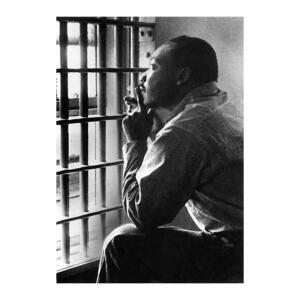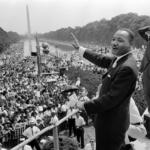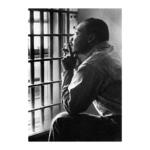
In the spring of 1963, Dr. Martin Luther King Jr. traveled to Birmingham, Alabama, to help lead peaceful protests against unfair treatment of Black Americans. Birmingham was one of the most racially segregated cities in the United States, and civil rights activists were working to end laws and practices that kept Black people from having the same rights as white people.
During one of the peaceful demonstrations, Dr. King was arrested and put in jail. While in jail, he read a public letter written by eight white religious leaders who criticized the protests and said that change should happen slowly through the courts—not through demonstrations.
Dr. King felt he needed to respond. Using the margins of a newspaper and scraps of paper, he wrote his famous “Letter from a Birmingham Jail.” In it, he explained why people must stand up against injustice and why waiting for justice often means never getting it. The letter became one of the most important writings of the Civil Rights Movement.
New Jersey Student Learning Standards:
- 6.1.8.CivicsPI.3.a: Cite evidence to evaluate the extent to which the leadership and decisions of early administrations of the national government met the goals established in the Constitution.
- 6.1.8.CivicsPI.3.b: Evaluate the effectiveness of the fundamental principles of the Constitution (i.e., consent of the governed, rule of law, federalism, limited government, separation of powers, checks and balances, and individual rights) in establishing a federal government that allows for growth and change over time.
- 6.1.8.CivicsDP.3.a: Use primary and secondary sources to assess whether or not the ideals
found in the Declaration of Independence were fulfilled for women, African Americans, and Native Americans during this period.
Curriculum
- 3 Sections
- 3 Lessons
- Lifetime
- Stage 11
- Stage 21
- Stage 31
Lesson Materials:
| Name | Type |
|---|


